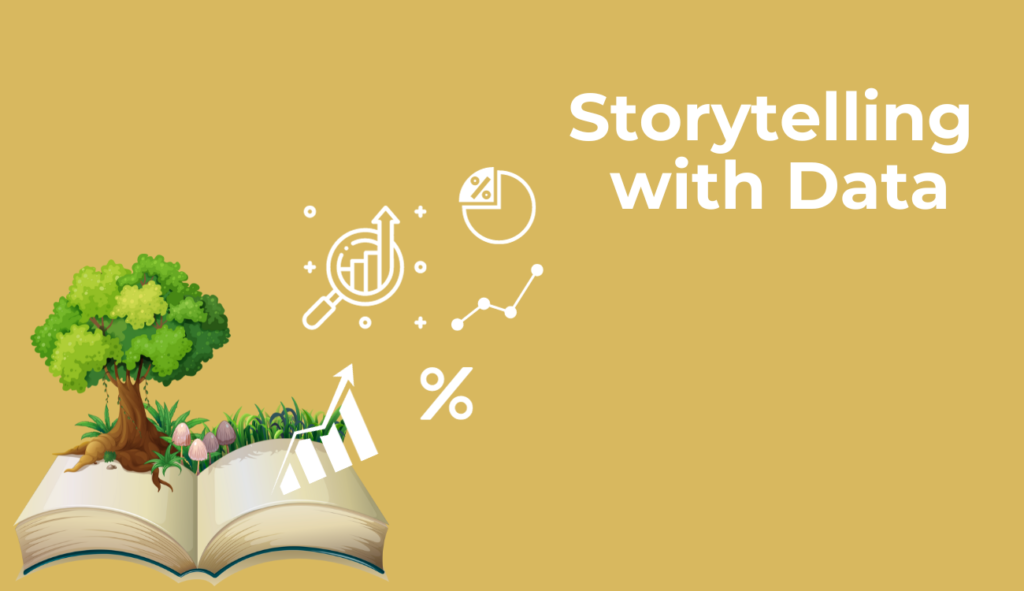
This is one of those topics that I can go on about forever, not because I love it (I sort of do) but because there are too many ways to tell stories with data and even more pitfalls to avoid.
The below isn’t about presenting research results or financial performance for key stakeholders, rather than using important data in telling a story to your audience, to elaborate:
The role of using data for storytelling is to:
- communicate your business value and prove your expertise
- encourage audiences to care about the data and take the action needed to reach your goal
- educate the audience about complex matters in an engaging way
Let’s keep this simple. To build a story through data you need:
1- Single out a primary goal
What do you want your audience to walk away with? Write a list points and figure out one specific goal you want to communicate. Two goals for a single piece of content is too many.
2- To figure out the data that aligns with the goal you want to communicate
A common mistake is focusing on a specific point you want to communicate and in the process ignoring all the data that doesn’t support your point, that’s you it’s important to ensure the following:
- If your data is from internal sources, you shouldn’t cut and past. Include all data that feeds both the point you want to make and the data that negates it
- If your data is from external sources it has to be from credible sources and, similarly, you shouldn’t take only what proves your point and ignore what negates it
- Data has to be current and applicable for your industry, geographic location, and audience. The buying behavior of US’ GenZ won’t be reflective of GCC’s construction executives
- If possible, aim for granular data. Highly specific statistics can have a dramatic impact on convincing readers
3- The narrative
It’s a story. How do you plan on connecting the data to communicate a series of connected events?
Here is my preferred method: Begin from the middle (others are below)
- The shocking figure: We did a study on all real estate developers in the region and 97% said they aren’t using AI in generating sales leads (made-up state)
- What larger question does this impose?
- The data that started to build other parts of the story: 71% don’t know enough about AI tools, 60% said the don’t work for their nature of work; 30% of clientele have an aversion to dealing with chatbots (still all made-up stats)
- Continue to build an image with these figures
- Finally reaching a destination, or your end goal. For this example, it could be highlighting how your SaaS product could push your clients far ahead, or explain an issue with the software your company wants to develop
4- The checklist: You’ll notice in the above example 6 things
- We skipped your motivation to examine the stats, or the beginning of the story. Business stories are never about you, they are about your audience
- We began with a hook, an interesting statistic, another way would be an interesting situation that happened
- The statistics are the events of the story
- The story highlights why the figures are relevant and important to the point made
- There is a liner flow of events, it’s a story
- There is an AHA moment in the story, where you discovered an interesting statistic
5- What is your solution?
Unlike regular stories, data storytelling isn’t just about entertaining your audience. You need to provide a specific conclusion and actionable steps to move forward from this point.
6- Your audience
Craft a story and reference data that is relevant to your audience. Your end users for example won’t care about your financial returns, but they will about your R&D and quality control data
Also, keep in mind the knowledge level of your audience about the data points you are explaining
Other story structures
- Three-act structure: the standard beginning, middle, and end, where the middle contains a point of reversal that changes the dynamic of the story
- The data cycle: a spin-off of the three-act structure where data is transformed from raw to refined and then used to come up with an actionable conclusion
- The hero’s journey: follows a protagonist’s journey from ordinary life to an extraordinary quest
- Circular narrative: a story that starts and ends in the same place or with the same event. In data storytelling, it may be most effective with discouragement.
Trying to be comprehensive in one post, won’t do this topic justice. So, for now, I leave you with a final tip: It’s a story, add some tension and suspense.
